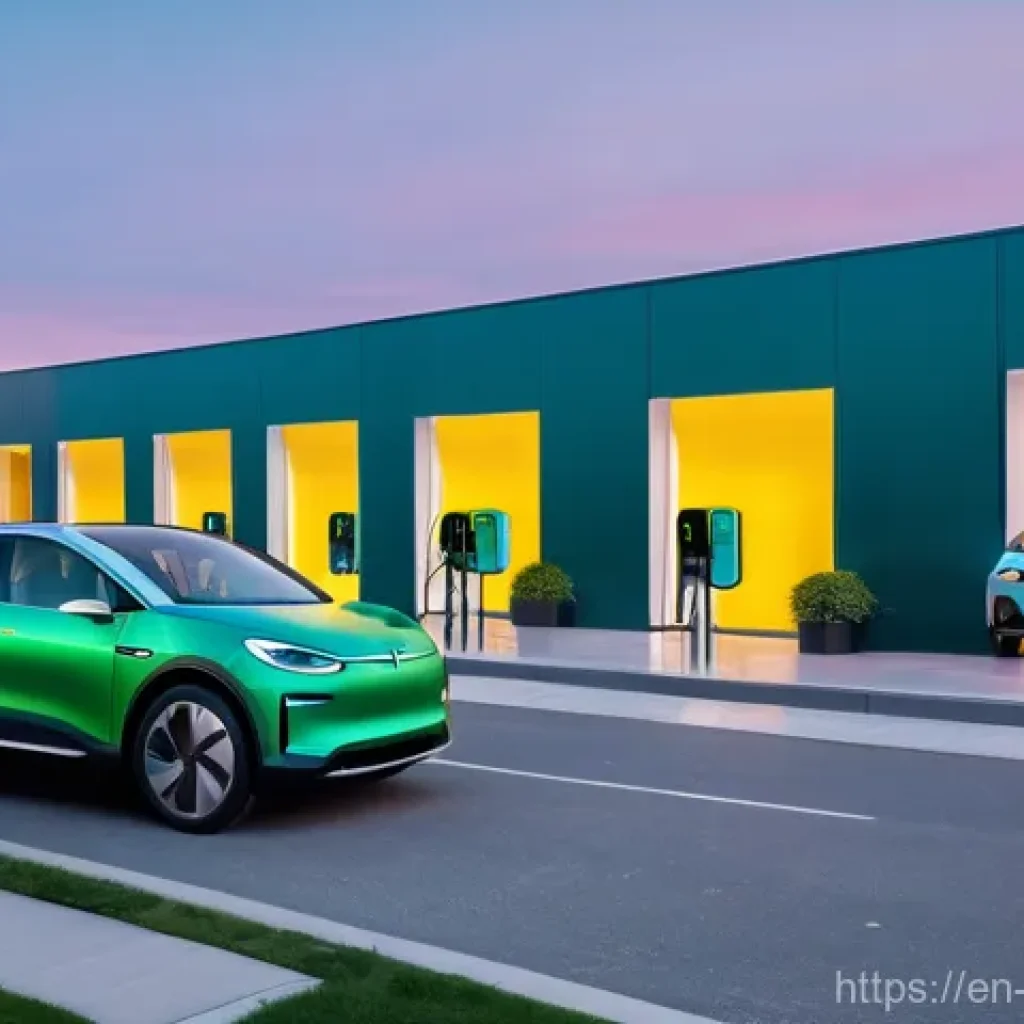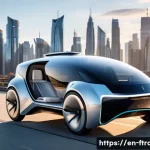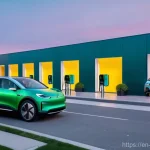Hey everyone! It’s your favorite English blog influencer here, ready to dive into a topic that’s been sparking conversations everywhere: the future of electric vehicles.
If you’re anything like me, you’ve probably noticed how EVs have rapidly shifted from a niche concept to a significant player on our roads, and honestly, the pace of change is just incredible!
It feels like just yesterday we were wondering if they’d ever truly catch on, and now, here we are in 2025, seeing global sales continue to climb, with projections that one in four cars sold this year will be electric.
From my perspective, it’s not just about reducing carbon emissions anymore; it’s about the tangible benefits we’re starting to experience. Think about it: lower running costs, cutting down on those pesky gas station visits, and the quiet, smooth ride that just makes daily commutes so much more enjoyable.
We’re also seeing some amazing breakthroughs in battery technology, offering longer ranges and faster charging times that truly address those lingering “range anxiety” worries many of us had.
Of course, it hasn’t been a completely smooth ride. We’ve certainly faced challenges like expanding charging infrastructure to keep up with demand and the initial higher purchase costs, which are slowly becoming more accessible thanks to innovation and incentives.
But honestly, the momentum is undeniable, and the industry is buzzing with new models hitting the market and exciting innovations around every corner.
It’s a fascinating time, full of opportunities and rapid evolution, and I truly believe we’re on the cusp of something transformative in how we move. Ready to plug into the details and discover what’s truly driving this electric revolution?
Let’s definitely find out more right below!
The Pulse of the EV Market: What 2025 is Showing Us
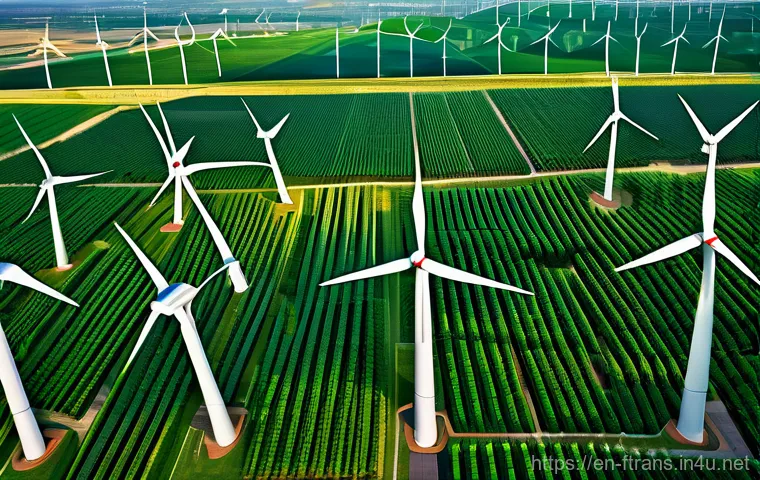
Stepping into 2025, I’ve been absolutely captivated by the sheer momentum of the electric vehicle market. It’s not just a whisper anymore; it’s a roaring trend! Globally, EV sales are projected to hit 21.3 million units this year, grabbing a solid 24% of the market share. That’s a massive leap from where we were just a few years ago. I remember conversations back in 2020 when people wondered if EVs would ever truly break into the mainstream, and now, here we are, seeing them everywhere. It truly feels like the world is finally catching on to what I’ve been excited about for ages.
What’s truly fascinating is how varied the growth is across different regions. China, for instance, is absolutely leading the charge, with EVs expected to make up over 51% of sales this year. Their competitive pricing and strong incentives have really pushed adoption. Europe is also seeing robust growth, aiming for 25% of light-vehicle sales to be electric in 2025, driven by stricter CO2 targets and an influx of new models. North America, while experiencing a bit of a slowdown compared to its aggressive targets in 2024, is still seeing EV sales boost the overall car market, where traditional car sales have stagnated. It really highlights how dynamic and responsive the market is to both policy and consumer preference. It’s a complex dance, but the direction is clear: electric is the future!
Global Sales Surge and Regional Dynamics
It’s genuinely thrilling to see how electric vehicle sales are skyrocketing worldwide. More than 4 million electric cars were sold in just the first quarter of 2025, marking a 35% increase compared to the same period in 2024. This isn’t just a fleeting trend; it’s a sustained acceleration that’s reshaping the automotive landscape. China continues to be a dominant force, accounting for about 60% of these first-quarter sales. Their commitment to electrification is truly impressive, and other emerging markets in Asia and Latin America are also seeing significant uptake. It makes me wonder if we’ll see similar explosive growth in other regions as more affordable models become available. I’ve been keenly watching these numbers, and every time I see an update, I feel more confident about the direction we’re heading.
Intensifying Competition and Model Expansion
The market is absolutely buzzing with new models, and I’m here for it! Manufacturers are really stepping up their game, offering everything from luxury SUVs to compact city cars. This expansion isn’t just about choice; it’s about pushing innovation and, crucially, making EVs more affordable. I’ve noticed a shift where consumers are starting to find EVs comparable in practicality and cost to traditional internal combustion engine (ICE) vehicles. While Tesla and BYD are still major players, the increased variety is fostering healthy competition, which is fantastic for us, the consumers. It makes me excited to see what new features and designs will emerge next, especially with brands like Kia and Hyundai consistently introducing compelling options.
Revolutionary Battery Advancements: Beyond Range Anxiety
Okay, let’s talk batteries! If there’s one area that has truly amazed me in the last year, it’s the sheer pace of battery technology development. For so long, “range anxiety” was a real concern for many, myself included, but honestly, those days are fading fast. We’re talking about batteries that charge in minutes, not hours, and last for a lifetime! Imagine pulling into a charging station and getting 80% charge in just 10 minutes—four times faster than the average of 30-45 minutes we’re used to. That’s a game-changer for road trips and daily commutes alike. Researchers at Oak Ridge National Laboratory, for example, have developed a new battery that does exactly this, maintaining performance even after 1,000 charge cycles. This kind of innovation completely transforms the EV experience, making it not just feasible, but genuinely convenient.
Beyond speed, the longevity and cost reductions are incredible. New technologies like sodium-ion, solid-state, and LFP Short Blade batteries are set to deliver lifespans of up to a million miles, or around 50 years, based on average driving habits. Seriously, a million miles! That’s like driving across the US over 300 times without needing a battery replacement. And sodium-ion batteries? They could slash the cost of your next EV by a third because sodium is so much cheaper and more abundant than lithium. This isn’t just about better cars; it’s about making EVs more accessible and sustainable for everyone. I truly believe these advancements are one of the biggest drivers behind the growing enthusiasm for electric vehicles.
Faster Charging, Longer Lifespans
The innovation in battery technology is truly making me giddy! Charging speeds are hitting new highs, with some models now able to gain significant charge in a mere 10 minutes. This addresses one of the biggest hurdles for potential EV owners, making the charging experience much more comparable to filling up a traditional gas tank. Moreover, the lifespan of these batteries is becoming absolutely astounding. We’re looking at batteries designed to last up to a million miles, which for most drivers, translates to the entire lifetime of the vehicle. This doesn’t just reduce the hassle and expense of replacements; it also significantly boosts the resale value of EVs, something I personally consider a huge plus. My own experience with current EVs has been great, but these future batteries truly take away any lingering doubts about long-term ownership.
Next-Generation Battery Chemistry
It’s not just about tweaking existing tech; we’re seeing entirely new chemistries emerge. Solid-state batteries, like the ones Chery is developing with a theoretical range of over 900 miles (1,500 km), are on the horizon for pilot testing by 2026. And Sunwoda’s “Xin·Bixiao” polymer all-solid-state battery system, with its 400 Wh/kg energy density and impressive durability, is a testament to how far we’ve come. These breakthroughs promise enhanced safety by eliminating thermal runaway risks and significantly improved energy storage. Tesla’s new nickel-based batteries, for example, allow daily charging to 90% without rapid degradation, a major improvement over the traditional 80% recommendation for lithium-ion batteries. This level of innovation means we’re not just improving EVs; we’re fundamentally redefining what a car can do.
Powering Up: The Expanding Charging Infrastructure
Okay, let’s be real: charging infrastructure has always been a hot topic, right? For years, it felt like a bit of a chicken-and-egg situation—do you build the chargers first, or do people buy the cars? But I can tell you, walking into 2025, that narrative is completely changing. It’s truly exciting to see the rapid expansion happening everywhere! Public chargers have actually doubled since 2022, now numbering over 5 million globally. That’s a huge step towards making EV ownership seamless for everyone, not just those with home charging options. I’ve personally seen more fast chargers pop up in unexpected places, making those longer journeys far less stressful.
Governments and private companies are pouring billions into this, and it’s paying off. The EU, for example, is mandating fast chargers every 60 km on core European highways by 2025, each delivering at least 150 kW. The UK is targeting 300,000 public chargers by 2030, and ChargeUK is committing over £6 billion to double chargepoints in the next 12 months alone. Even airports are getting in on the action, designating areas for EV charging. This isn’t just about having more plugs; it’s about faster, more convenient, and more reliable charging, which really impacts our daily lives and how we plan our trips. I can confidently say that “range anxiety” is becoming a thing of the past for most drivers, and that’s truly a relief.
Public Charging Points Proliferate
It’s clear that public charging is no longer a luxury but a necessity, and the growth we’re seeing is phenomenal. In 2024 alone, over 1.3 million public charging points were added globally, representing a 30% increase from the previous year. China is still leading the way, boasting about 65% of the world’s publicly accessible chargers. But Europe is rapidly catching up, with its network of public charging points exceeding 1 million in 2024. The sheer number of new installations means that whether you’re commuting in the city or embarking on a cross-country adventure, finding a place to power up is becoming increasingly easy. I remember struggling to find reliable chargers just a few years ago, so this rapid expansion genuinely makes me feel more confident about planning longer trips in my EV.
Smart Charging and Grid Integration
Beyond just the sheer number of chargers, the intelligence behind them is evolving at lightning speed. We’re moving towards a future where smart charging is the norm, allowing EVs to charge when electricity demand is lower, which not only saves us money but also helps balance the grid. Companies are investing in site-level battery storage and integrating charging stations with renewable energy sources, and even home energy systems. This means charging isn’t just a separate task; it’s becoming an integrated part of a smart energy ecosystem. The UK government, for example, is confident that the grid can cope with the increased demand, thanks to flexible electricity systems and smart charging initiatives. This kind of foresight and technological integration is truly what will make mass EV adoption sustainable in the long run.
Making EVs Accessible: Affordability and Incentives
One of the biggest conversations around EVs used to be, “But are they affordable?” And honestly, for a while, that was a fair question. However, stepping into 2025, I can confidently say that the landscape has shifted dramatically! Affordability has made significant strides, primarily driven by falling battery prices, intense market competition, and automakers achieving economies of scale. I’ve personally seen the average price premium for EVs drop, making them much more comparable to traditional cars, especially when you factor in the lower running and maintenance costs. It’s no longer just a luxury item; the affordable EV market has truly landed.
Government incentives also play a crucial role, though they are certainly evolving. In the US, for example, while federal tax credits for new and used EVs are available through September 30, 2025, they are then set to expire. However, state-level programs continue to support EV purchases, which is great. What’s truly exciting is that a significant number of new models expected to launch below the $30,000 mark, making EVs accessible to a wider audience than ever before. This push for more budget-friendly options, combined with the growing used EV market, means that going electric is becoming a realistic option for so many more people. I’m really encouraged by how much progress has been made to bridge that initial price gap.
Declining Costs and Market Competition
I’ve been watching the price trends closely, and it’s clear that the cost of EVs is becoming increasingly competitive. Battery pack prices, a major component of EV cost, fell by more than 25% in 2024 compared to 2023, directly impacting manufacturing costs and, ultimately, retail prices. This decline, alongside fierce competition, particularly from Chinese brands offering more affordable models, is driving prices down across the board. It’s a win-win for consumers as we get more bang for our buck. In fact, in some emerging EV markets, the cheapest battery electric cars are now even less expensive than the average ICE car. That’s a huge psychological barrier removed, and it’s something I’ve seen make a big difference in people’s purchasing decisions.
Evolving Incentives and Financial Landscape
Navigating incentives can sometimes feel like a puzzle, but they’ve undeniably made a difference. In the US, the federal tax credit of up to $7,500 for new EVs and $4,000 for used EVs has been a significant boost, though it’s important to note these specific federal credits end after September 30, 2025. However, many state and local incentives are still very much alive, which is fantastic for local buyers. Moreover, the shift towards leasing options is also making EVs more accessible, often with lower monthly payments than comparable ICE vehicles due to various incentives. As someone who loves a good deal, I’m always on the lookout for these programs, and they can genuinely make the switch to electric much easier on the wallet.
The New Age of EV Models and Diverse Offerings
If you’re anything like me, you get excited about new cars, and let me tell you, the EV space in 2025 is an absolute playground of fresh models! It’s not just about a few pioneers anymore; every major automaker, and a host of exciting new players, are rolling out electric vehicles across every segment imaginable. I’m seeing everything from sleek, high-performance sports cars to robust electric trucks and spacious family SUVs. This diverse offering is truly a testament to how far the industry has come, moving beyond early adopter vehicles to genuinely cater to a broader audience with varied needs and preferences. It makes me feel like there’s an EV out there for literally everyone now, and that’s a fantastic feeling!
We’re talking about established brands like BMW introducing the iX3 with 800V architecture for ultra-fast charging and extended range, and Hyundai pushing boundaries with the Ioniq 6 N, boasting 641 horsepower. Even iconic American brands like Jeep are launching all-electric SUVs like the Wagoneer S and Recon. It’s not just about luxury either; there’s a strong push for more affordable, compact crossovers like the Hyundai Inster, aimed at tighter budgets. This rich variety is not only fostering intense competition, which benefits us as consumers with better features and pricing, but also expanding the sheer possibilities of what an electric vehicle can be. I’ve been fortunate enough to test drive a few of these new models, and the blend of performance, technology, and sustainability is truly impressive!
Showcasing the Latest Electric Rides
The sheer number of new EV models hitting the market in 2025 is mind-boggling, and it’s fantastic! From what I’ve seen, it’s not just about updating existing lines; manufacturers are innovating with entirely new platforms and designs. For example, Audi is bringing the Q6 e-tron and A6 e-tron, promising premium experiences with strong ranges. Tesla’s Project Juniper is a refresh for the Model Y, and even an entry-level Model Q under $30,000 is on the cards. Then you have unexpected delights like the Polestar 4, known for its sleek design and impressive acceleration. This means more choices, better designs, and features tailored to different lifestyles. It really makes the idea of switching to electric so much more appealing when you see such a wide array of options.
Beyond Passenger Cars: Electrifying Every Segment
It’s not just passenger cars getting all the electric love anymore, and I’m thrilled about it! We’re seeing electrification spread rapidly to other areas of road transport, with electric buses, two- and three-wheelers already seeing very high levels of adoption in many places. Even the commercial sector is getting a huge boost; global electric truck sales surged by nearly 80% in 2024, with China leading the charge. Ram is introducing the 1500 REV, an all-electric pickup that looks incredibly capable. This expansion into heavier-duty vehicles and public transport shows that the electric revolution is much bigger than just our personal cars; it’s transforming how goods move and how cities operate. This broad adoption is a clear signal that EVs are here to stay and are truly a viable solution for nearly every transportation need.
The Green Advantage: EVs and Environmental Impact
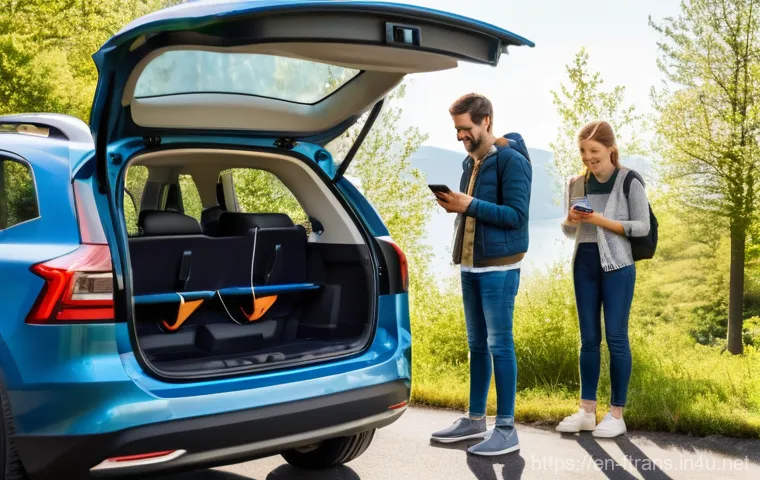
Let’s talk about the elephant in the room—or rather, the lack of emissions from the tailpipe! When I first got into EVs, it was definitely for the environmental benefits, and honestly, every year the data gets even more compelling. Back in the early 2000s, there were genuine questions about the overall carbon footprint, especially related to battery manufacturing and the energy grid. But wow, have things changed! Today, most EVs reach a carbon break-even point—where their total lifetime emissions are lower than a comparable gas vehicle’s—within just 16-18 months of regular use. That’s incredibly fast! And it makes me feel so good about driving electric every single day.
The manufacturing process for EV batteries has also seen remarkable improvements. What used to generate about 8.5 metric tons of CO2 in 2020 has dropped to roughly 5.3 metric tons by 2025, thanks to cleaner processes and evolving technology. This means that not only are EVs producing zero tailpipe emissions, but the entire lifecycle footprint is shrinking rapidly. My own calculations show a 6% reduction in lifetime emissions just from grid improvements over the past year. In the EU, for example, battery electric vehicles are estimated to have life-cycle emissions that are 73% lower than gasoline ICEVs. This isn’t just about feeling good; it’s about a tangible, measurable positive impact on our planet. It’s a huge part of why I’m such a passionate advocate for electric transportation.
Beyond Zero Tailpipe Emissions
While the absence of tailpipe emissions is the most obvious benefit, the environmental advantages of EVs go much deeper. The overall lifecycle greenhouse gas emissions are significantly lower than traditional gasoline cars. For instance, an EV driven 200,000 miles in 2025 will generate about 30 metric tons of CO2 over its lifetime, including manufacturing, compared to 85 metric tons for a typical gas vehicle. This dramatic reduction is fueled by an increasingly cleaner electricity grid and advancements in sustainable manufacturing processes for batteries and vehicles. It’s a holistic improvement that paints a clear picture of EVs as a crucial part of a sustainable future. It’s truly heartwarming to see this progress.
Recycling and Resource Management
Another area that brings me a lot of hope is the growing focus on battery recycling and resource management. We often hear concerns about the raw materials for batteries, but governments and industries are actively investing in projects to create closed-loop systems. The UK government, for example, is supporting a groundbreaking project (RECOVAS) to develop the country’s first commercial-scale recycling facility for EV batteries. This kind of initiative ensures that valuable materials are recovered and reused, reducing the need for new mining and creating a more circular economy. It’s a vital step towards making the entire EV ecosystem truly sustainable and addressing any lingering concerns about resource depletion. I’m eager to see more of these recycling solutions scale up globally.
Shifting Gears: The Traditional Auto Industry’s Transformation
It’s no secret that the rise of electric vehicles has sent shockwaves through the traditional automotive industry, and honestly, watching it unfold has been a captivating journey. For decades, the internal combustion engine was king, but now, legacy automakers are having to completely rethink their strategies, and fast! I remember a time when major brands were hesitant to dive fully into EVs, almost dipping a toe in the water. But now, it’s a full-on plunge. They’re investing massive amounts in dedicated EV platforms, cutting-edge battery technology, and even developing their own in-house software expertise. This isn’t just an upgrade; it’s a fundamental transformation of how cars are designed, built, and sold. It truly feels like a new era for the entire automotive world.
However, this transformation isn’t without its challenges, especially for those traditional giants. They’re grappling with the complexities of transitioning from centuries-old manufacturing techniques to highly advanced, technology-integrated EV production. We’re seeing some automakers report significant financial hurdles in EV production, which underscores the scale of this shift. Yet, despite these difficulties, they are forging ahead, forming strategic partnerships with tech companies and even reevaluating traditional dealership models. It’s a dynamic and sometimes bumpy road, but the momentum is undeniable. I genuinely believe that this push from established players will only accelerate the adoption of EVs globally, bringing innovation and scale that newer entrants might find harder to match on their own.
Adapting to the Electric Future
Traditional automakers are really getting serious about the electric future, and it’s exciting to witness their evolution. Companies like Ford and GM are making massive investments in EV manufacturing and supply chains, securing critical raw materials like lithium and nickel. They’re not just building electric versions of their existing cars; they’re creating entirely new architectures designed from the ground up for electric powertrains. This adaptability is crucial for staying competitive, especially as Chinese brands continue to dominate segments of the EV market. It’s a fascinating race, and I’m constantly amazed by the innovative ways these long-standing companies are pivoting to meet new demands and challenges.
Supply Chain and Manufacturing Shifts
The shift to EVs has created a domino effect, particularly in the supply chain and manufacturing sector. There’s a huge focus on localizing battery production and sourcing critical materials to reduce reliance on complex global supply chains. This is leading to new factories and job opportunities, which is fantastic for local economies. However, it also presents challenges, with tariffs on imported EV batteries and raw materials potentially increasing production costs for some automakers. It’s a delicate balance, but the drive towards more resilient and sustainable supply chains is a clear positive. I’ve personally been following the progress of battery gigafactories, and it’s incredible to see how quickly this new infrastructure is being built to support the electric revolution.
Integrating Smart Tech and Autonomous Driving
You know, as an influencer who lives and breathes tech, one of the most thrilling aspects of the EV revolution for me is how it’s becoming the perfect playground for integrating advanced smart technologies and, of course, autonomous driving. It’s like these vehicles were born to be smart, connected devices on wheels! Because EVs run on electric platforms and sophisticated software, they naturally lend themselves to seamless integration with smart home systems, real-time updates, and advanced infotainment. It’s not just about getting from A to B anymore; it’s about the entire journey being an extension of your digital life, and frankly, that’s incredibly cool.
Autonomous driving technology, which once felt like something out of a sci-fi movie, is becoming increasingly sophisticated, and EVs are at the forefront of this development. The electrical architecture of EVs provides the ideal foundation for the complex sensor arrays and processing power needed for self-driving capabilities. Automakers are pouring investments into this area, and we’re seeing more autonomous features slowly but surely making their way into production models. While fully autonomous vehicles might still be a little ways off for everyday driving, the advancements in assisted driving features are already making our commutes safer and more relaxing. I’ve personally experienced some of these advanced features, and they truly transform the driving experience, making me feel more connected and secure on the road. It’s an exciting glimpse into the future!
The Connected Car Experience
The demand for connected features in EVs is absolutely soaring, and it’s easy to see why. We want our cars to seamlessly integrate with our digital lives, offering everything from over-the-air updates that improve performance and add new features, to advanced navigation and entertainment systems that keep us connected and engaged. I’ve found that these features not only make driving more enjoyable but also more efficient. Imagine your car communicating with your smart home to pre-condition the climate or initiate charging based on electricity prices. This level of integration is becoming standard, and it’s something I absolutely love about modern EVs. It’s making our cars feel less like machines and more like intelligent companions.
Autonomous Capabilities on the Horizon
While we might not all be napping behind the wheel just yet, the progress in autonomous driving is genuinely exciting, and EVs are the perfect platform for it. The electrical systems and advanced sensors inherent in electric vehicles provide a robust foundation for developing and deploying these cutting-edge technologies. Automakers are heavily investing in this space, and we’re seeing features like advanced cruise control, lane-keeping assistance, and automatic parking become more refined and widely available. This isn’t just about convenience; it’s about enhancing safety and reducing driver fatigue, which are huge benefits in my book. I’m constantly impressed by how these systems learn and improve, making me feel a sense of confidence that the future of driving is truly in good hands.
| EV Trend Highlight (2025 Projections) | Key Metric / Impact | Notes / Details |
|---|---|---|
| Global EV Sales Share | 24% of all new car sales | Projected 21.3 million units sold globally |
| Battery Technology | 10-minute 80% charge, 1 million-mile lifespan | Advancements in solid-state, sodium-ion, LFP Short Blade batteries |
| Public Charging Growth | Over 5 million global chargers | Doubled since 2022; EU mandates fast chargers every 60 km on highways |
| EV Affordability | Price premium shrinking; more models under $30,000 | Falling battery costs, increased competition, evolving incentives |
| Environmental Impact | 73% lower lifecycle GHG emissions than ICEVs (EU) | Break-even point for carbon footprint within 16-18 months of use |
The Road Ahead: What’s Next for Electric Mobility
Looking into the crystal ball for electric vehicles, I feel like we’re just scratching the surface of what’s possible, and honestly, it’s incredibly exciting! The pace of innovation isn’t slowing down; if anything, it’s accelerating. We’re going to see even more dramatic shifts in battery technology, with breakthroughs constantly pushing the boundaries of range, charging speed, and longevity. Imagine a world where a car battery genuinely lasts the entire lifespan of the vehicle, or where you can add hundreds of miles of range during a quick coffee break. These aren’t far-off dreams anymore; they’re becoming our reality. I truly believe that the continuous advancements in this space will make EV ownership even more appealing and convenient for everyone, removing any lingering doubts about making the switch.
Beyond the technological marvels, I’m really keen to see how the broader ecosystem evolves. Charging infrastructure will continue to become more robust and seamlessly integrated into our daily lives, making public charging a truly effortless experience. We’ll also see a greater emphasis on smart energy management, with EVs playing a key role in supporting the grid, perhaps even powering our homes during peak demand or outages. The drive for sustainability will push for even cleaner manufacturing and more efficient recycling processes, making the entire lifecycle of an EV as green as possible. This holistic approach, from production to power, is what truly excites me about the future of electric mobility. It’s a journey, not just a destination, and I’m thrilled to be a part of it, sharing all the latest and greatest with you along the way!
Sustainable Materials and Circular Economy
The commitment to sustainability in the EV world is only going to deepen, and that’s something I’m incredibly passionate about. We’re seeing a huge push towards developing more sustainable battery materials and establishing robust recycling programs to create a truly circular economy. This means reducing reliance on newly mined resources and ensuring that precious metals are recovered and reused. Efforts like the RECOVAS project in the UK, aiming to create commercial-scale EV battery recycling, are just the beginning. I believe that in the coming years, we’ll see even more innovative solutions for repurposing batteries for second-life applications, such as grid storage, before they are eventually recycled. This focus on environmental responsibility throughout the entire product lifecycle is a cornerstone of the EV movement and something that truly makes me proud to be an advocate.
EVs as Powerhouses: Vehicle-to-Grid Integration
Imagine your electric vehicle not just as transportation, but as a mobile power bank for your home or even the grid itself! That’s the exciting potential of Vehicle-to-Grid (V2G) technology, and it’s rapidly moving from concept to reality. This allows your EV to not only draw power for charging but also send electricity back to your home or the grid during peak demand or outages. It’s a game-changer for energy resilience and efficiency. I can envision a future where EVs actively contribute to balancing the electricity network, turning what used to be a consumer of energy into an active participant in the energy ecosystem. This is a topic I’m following closely, as I believe it will fundamentally transform our relationship with both our cars and our power supply.
글을 마치며
Well, friends, what an incredible journey we’ve taken through the electrifying world of EVs! It’s truly amazing to see how far we’ve come and how quickly the future is unfolding before our eyes.
I hope this deep dive has sparked your own excitement for electric mobility, just as it has continuously fueled mine. From groundbreaking battery tech to an ever-expanding charging network, and the sheer variety of incredible new models, the message is loud and clear: the electric revolution isn’t just coming, it’s already here, transforming our roads and our planet for the better.
Keep charging forward, everyone!
알아두면 쓸모 있는 정보
1. Home Charging is a Game-Changer: Seriously, if you can, installing a home charger dramatically enhances the EV experience. Waking up to a “full tank” every morning is incredibly convenient and often cheaper than public charging. It really transforms your daily routine!
2. Don’t Forget Incentives: Before you buy, always research the federal, state, and local incentives available in your area. These can significantly reduce the upfront cost of an EV, making it much more affordable than you might think. It’s like finding a hidden discount!
3. The Used EV Market is Booming: If a brand-new EV feels a bit out of reach, take a peek at the used market. With new battery tech and declining prices for older models, you can often find fantastic deals on well-maintained electric vehicles that still offer great range and features.
4. Understanding Charging Speeds: Get familiar with the different types of chargers (Level 1, Level 2, DC Fast Chargers) and their speeds. Knowing where and when to use each can save you time and stress, especially on longer trips. A little planning goes a long way!
5. Total Cost of Ownership Matters: While the initial purchase price might sometimes be higher, remember to factor in the lower fuel costs, reduced maintenance, and potential tax breaks. Often, the total cost of owning an EV over its lifetime ends up being lower than a comparable gasoline car.
중요 사항 정리
The electric vehicle market is experiencing unprecedented growth, with global sales projected to capture a significant share of new car purchases in 2025.
This surge is powered by revolutionary advancements in battery technology, offering faster charging, longer lifespans, and improved safety, effectively tackling “range anxiety.” Simultaneously, charging infrastructure is expanding rapidly worldwide, with governments and private sectors investing heavily to ensure convenient and widespread access.
EVs are also becoming more accessible due to declining costs, intense market competition, and evolving financial incentives. The automotive industry is fully embracing this transformation, launching a diverse array of new electric models across all segments, and integrating smart technology, including autonomous driving features.
Critically, EVs offer substantial environmental benefits through reduced lifecycle emissions, with ongoing efforts in sustainable materials and recycling shaping a greener future.
Frequently Asked Questions (FAQ) 📖
Q: What’s the real deal with EV charging – is it still a huge hassle, and should I be worried about range anxiety?
A: This is honestly one of the biggest questions I get, and it’s a completely valid one because, let’s be real, nobody wants to be stranded! What I’ve personally found over the past few years is that the charging landscape has changed dramatically.
I remember when finding a public charger felt like a treasure hunt, but now, it’s becoming so much more accessible. Think about it: gas stations are everywhere, and while EV chargers aren’t quite there yet, the growth is incredible.
I’m seeing more and more fast chargers popping up along major highways, at shopping centers, and even at my local grocery store. It’s truly shifting the game.
Plus, for most of us, 80-90% of our charging happens right at home overnight, just like plugging in your phone. You wake up with a “full tank” every morning!
As for range anxiety, I used to feel it too, especially on longer trips. But with today’s EVs offering ranges of 250, 300, even 400 miles on a single charge, it’s really become less of a concern.
It’s more about planning ahead for those really long hauls, which, let’s be honest, you’d do anyway for gas stops. It’s less of a hassle and more of a new habit!
Q: EVs often seem more expensive upfront. Is the long-term saving truly worth that initial investment?
A: Oh, the age-old question of initial cost versus long-term savings! I totally get it – that sticker price can sometimes make you do a double-take. I remember feeling the same way when I first looked into EVs.
However, my experience, and what I’ve seen countless others discover, is that the savings really do add up, and often faster than you’d expect. First off, let’s talk about fuel.
Say goodbye to those painful trips to the gas pump! Electricity, even with fluctuating rates, is consistently cheaper per mile than gasoline. And if you have solar panels at home or can charge during off-peak hours, those savings become even more significant.
Then there’s maintenance. EVs have far fewer moving parts than traditional gasoline cars, meaning less to break down and fewer routine services like oil changes.
I’ve personally found my maintenance bills to be significantly lower. Add in potential federal tax credits or state incentives that can drastically reduce the purchase price, and suddenly, that upfront cost looks a lot less intimidating.
For me, the peace of mind knowing I’m saving money every single day, while also contributing to a cleaner environment, makes that initial investment absolutely worth it.
It’s not just about the money; it’s about a smarter way to drive.
Q: What kind of exciting breakthroughs can we expect in EV technology, especially with batteries and performance, in the next few years?
A: This is where it gets really exciting, my friends! If you think EVs are impressive now, just wait. The pace of innovation in battery technology is absolutely mind-blowing.
I’m constantly hearing about new developments that are pushing boundaries. We’re already seeing cars that can charge incredibly fast, sometimes adding hundreds of miles of range in just minutes – that’s a game-changer for road trips!
But beyond that, companies are tirelessly working on solid-state batteries, which promise even longer ranges, faster charging, and potentially even safer vehicles.
Imagine a battery that’s lighter, smaller, and gives you even more miles per charge! Plus, we’re seeing huge advancements in vehicle-to-grid (V2G) technology, where your EV could actually power your home during an outage or even send energy back to the grid, becoming a mobile power bank.
And let’s not forget performance! EVs are already known for their instant torque and quick acceleration, but the handling and driving dynamics are only getting better with advanced software and motor designs.
It feels like every month there’s a new record being broken or a new feature being unveiled. Trust me, the future of driving is looking incredibly bright, and I’m personally so thrilled to see what innovations are just around the corner!
